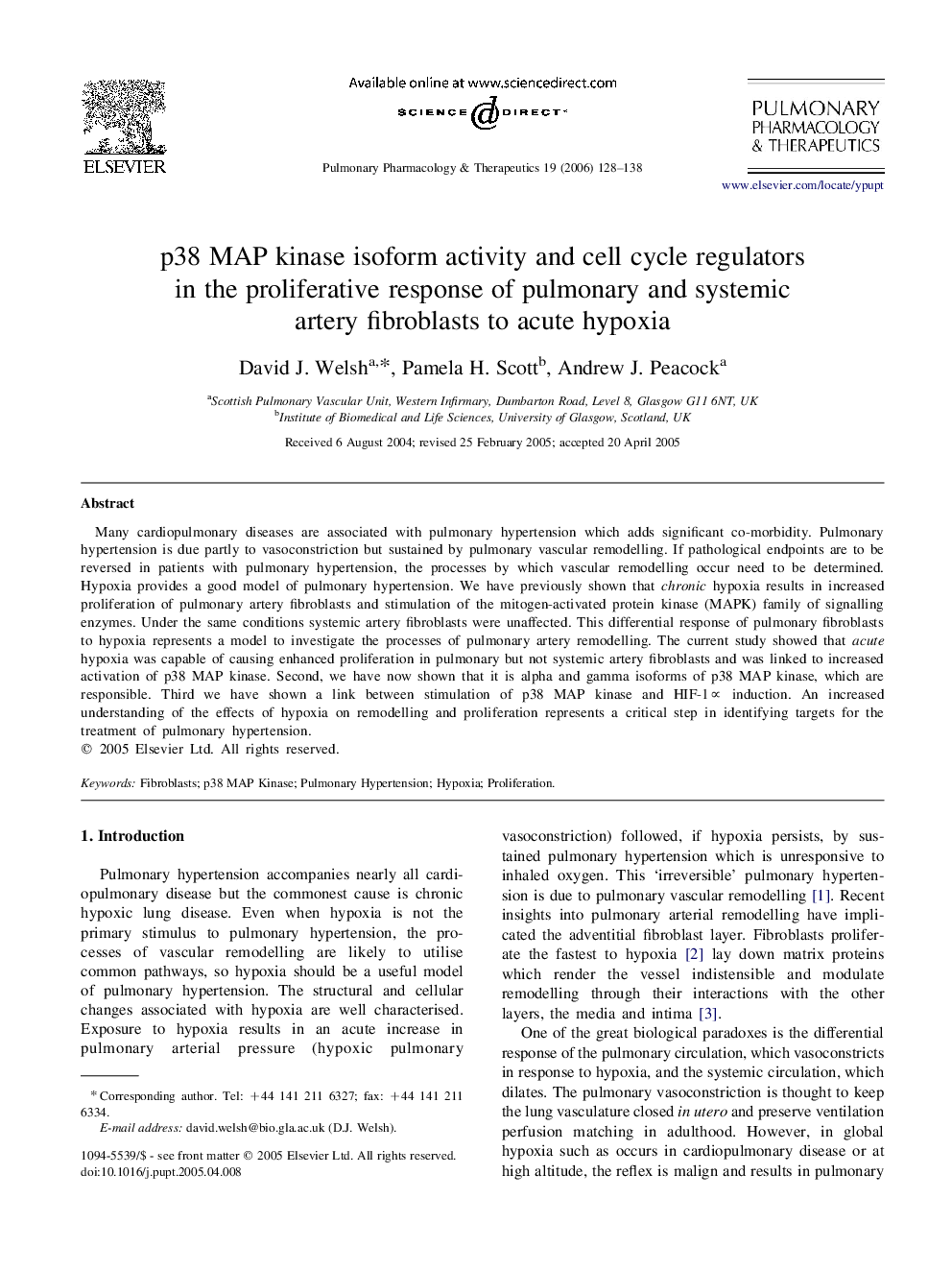| Article ID | Journal | Published Year | Pages | File Type |
|---|---|---|---|---|
| 2567850 | Pulmonary Pharmacology & Therapeutics | 2006 | 11 Pages |
Many cardiopulmonary diseases are associated with pulmonary hypertension which adds significant co-morbidity. Pulmonary hypertension is due partly to vasoconstriction but sustained by pulmonary vascular remodelling. If pathological endpoints are to be reversed in patients with pulmonary hypertension, the processes by which vascular remodelling occur need to be determined. Hypoxia provides a good model of pulmonary hypertension. We have previously shown that chronic hypoxia results in increased proliferation of pulmonary artery fibroblasts and stimulation of the mitogen-activated protein kinase (MAPK) family of signalling enzymes. Under the same conditions systemic artery fibroblasts were unaffected. This differential response of pulmonary fibroblasts to hypoxia represents a model to investigate the processes of pulmonary artery remodelling. The current study showed that acute hypoxia was capable of causing enhanced proliferation in pulmonary but not systemic artery fibroblasts and was linked to increased activation of p38 MAP kinase. Second, we have now shown that it is alpha and gamma isoforms of p38 MAP kinase, which are responsible. Third we have shown a link between stimulation of p38 MAP kinase and HIF-1∝ induction. An increased understanding of the effects of hypoxia on remodelling and proliferation represents a critical step in identifying targets for the treatment of pulmonary hypertension.
